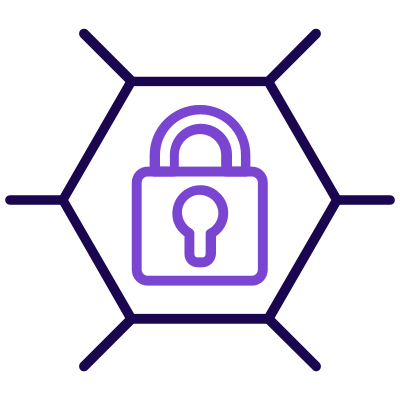With the emergence of the Security Network Operations Center (SNOC), security and network operations are combined to optimise resource sharing, better protect corporate data, improve communication, increase efficiencies, and ensure a stronger, more unified cybersecurity defense strategy.
Both the SOC and NOC perform vital functions: the SOC to ensure that cybersecurity threats are centrally monitored and acted upon to protect a company’s information assets; the NOC to ensure high availability and performance of critical corporate networks to protect the company’s ability to service its customers.
There is no dispute that the SOC and NOC have completely different functions, however there is definite overlap in mission and a strong business case for combining the two.
The benefits of a combined SNOC, whether it is in part or wholly outsourced as a managed service, far outweigh the negatives.
This is particularly true for the smaller to midsized company of up to 2 500 users due to the large investment required to purchase and maintain state-of-the-art SNOC assets.
With a SNOC the business is the biggest beneficiary. Why? Because the goal of both the SOC and NOC network operations centre is the same: to protect the business from any threats that will bring down critical network operations – whether it is of human (cybercriminals) or non-human origin (network infrastructure).
SNOC Security and Network Operations Combined Benefits
Optimising expenditure on tools and sharing of processes and best practices are some of the most important reasons companies have for choosing the SNOC approach.
Having a SNOC view of your infrastructure means the business can be responsive to market and customer needs while ensuring total security and compliance.
Both the NOC and SOC rely on a similar set of processes and technology tools which can result in the organisation overpaying, as well as costs incurred due to duplication of resources, work, procurement, and training.
A combined approach means increased sharing and cross-pollination of similar, but previously siloed resources and knowledge.
In addition, the rise of automation allows routine IT hygiene tasks to be done without human intervention, meaning costs associated with resources can be minimised. Further to this AI and machine learning’s role is becoming more important as cyberattacks grow more sophisticated and cloud services increase the playing field for cybercriminals.
The organisation that has access to AI technologies and solutions offered by a managed SNOC solution, will have a clear business advantage. Many organisations are turning to outsourcing the NOC and SOC full form as a way to quickly leverage these technologies, tools and services without the capital expenditure and skills required to set up and manage them.
The Secure Network Operations Center – Cybersecurity Monitoring and Logging Challenges
A business must ensure complete visibility throughout its cybersecurity monitoring tools and processes; having the ability to interrogate information received from logs, the network, endpoints and applications, to effectively spot a cybersecurity attack.
The proliferation of applications, platforms, users, and devices is unprecedented today, creating a bigger attack surface for hackers and threatening to outpace a company’s IT resources and existing tools.
While many IT departments are able to log the necessary cybersecurity-related events, the challenges come into play when analysing these logs, effective threat intelligence and incident response.
A holistic SNOC security strategy and set of tools are imperative to proactively identify potential indicators of compromise (IOC) sooner rather than later; investigate these thoroughly; take immediate action when responding to events, and still ensure full security compliance.
Compromising Network Perimeter Security: Real Case
Here’s a case study of a disastrous security incident, and what you should know for future preparedness.
A well-known company became the victim of a phishing scam when cybercriminals used a creative email template that “pretended” to remind employees to complete security awareness training by downloading and completing an attached file.
The aim was to trick someone inside the company into downloading it, allowing malware to be installed giving the hacker access to the corporate network.
Once through the firewall, the attacker patiently looked for administrative-level credentials to get greater control and visibility of network resources, while at the same time scanning for basic security vulnerabilities in the network.
It is believed that the attacker found default login details on a computer that was left blank, or that had not been changed, to get deeper access to the network.
From there the hacker/s turned to the corporate servers – using a covert channel (HTTPS proxy) to hide their presence – looking for a way to get what they came for: the data. It is believed they compromised the intrusion detection system to deflect suspicious activity using a legitimate support tool like Teamviewer.
This led to the theft of 100 000 customer records and caused havoc on the server and network, essentially bringing the company to its knees for a few days. Data stolen included email addresses, birthdates, IP address, display names, account names and third-party IDs such as Facebook or Google.
The company suffered massive reputational damage and loss of revenues due to this event, proving that ongoing cybersecurity monitoring tools and efforts must be continuously studied, revised, and reinforced to ensure strong cyber defense is in play.
SNOC Best Practices for Future Preparedness
- Privileged Access Management (PAM) to secure the infrastructure and strengthen privileged accounts’ security, therefore the company could have blocked credential theft attempts.
- Top-notch Security Information & Event Management (SIEM) tools to aggregate data logs across users, devices, and servers to find security threats. Combined with sophisticated User & Entity Behavior Analytics (UEBA) which detects anomalies in user behaviour, it is unlikely that the hacker would have remained undetected for very long.
- With Automation & Response (SOAR) solutions, the company would have had a streamlined security operation from threat and vulnerability management, incident response and automated security operations, allowing swift and effective resolution.
- Penetration testing should have been done on a regular basis, which would reveal actual and potential vulnerabilities that could be exploited by a hacker. This includes testing of wireless and web applications, rogue AP detection and Attack Path Mapping (APM).
- Social awareness and social engineering training for end-users should also form a key component of the company’s security strategy.
Companies are turning to specialist cybersecurity and managed SNOC providers like ENHALO who have the experience and platforms to take care of security and network operations, thereby minimising risk and reducing costs, while safeguarding the business.
With ENHALO, organisations get access to the engineers needed to run a NOC or SOC on-demand, lowering costs and reducing onboarding time.
Choose ENHALO to get the skilled people you need today and take your security and network operations to the next level.







